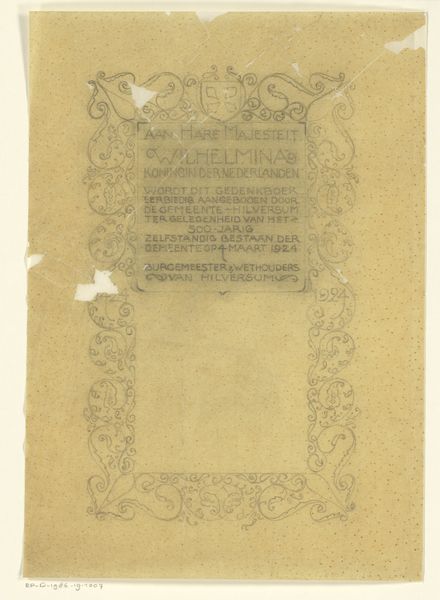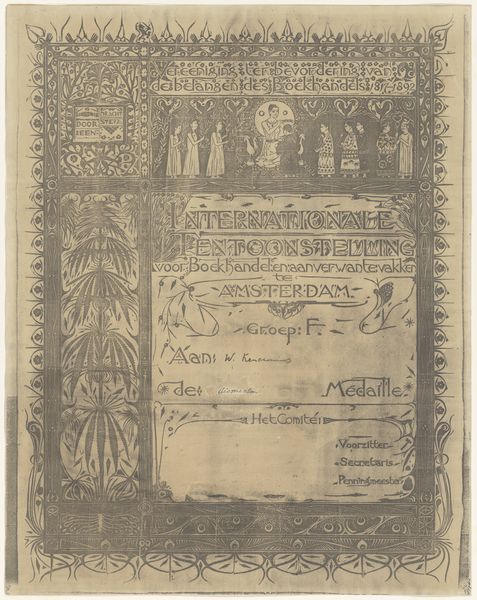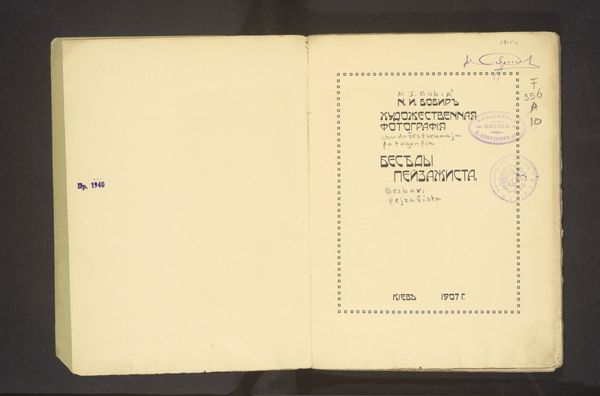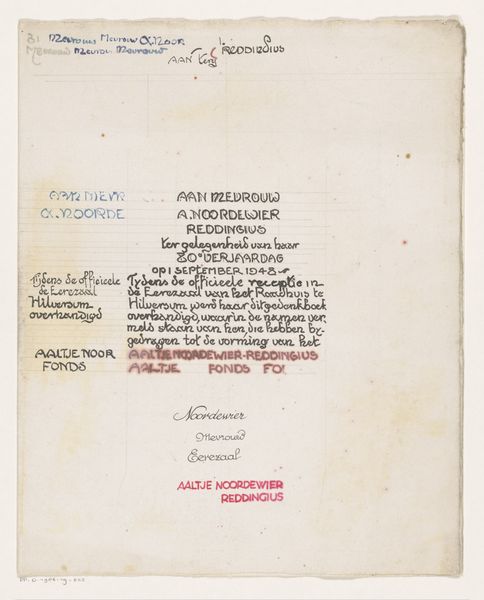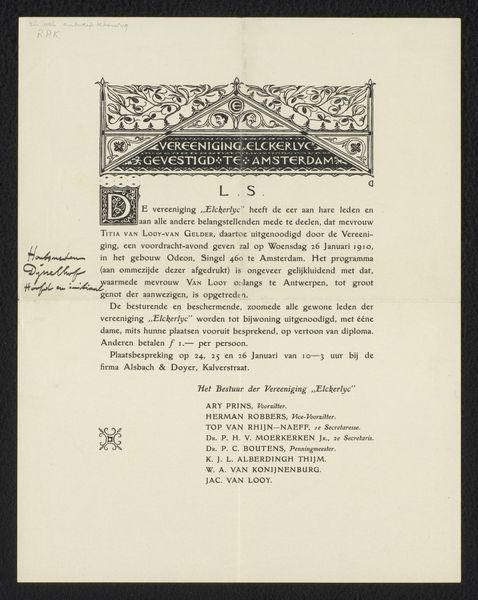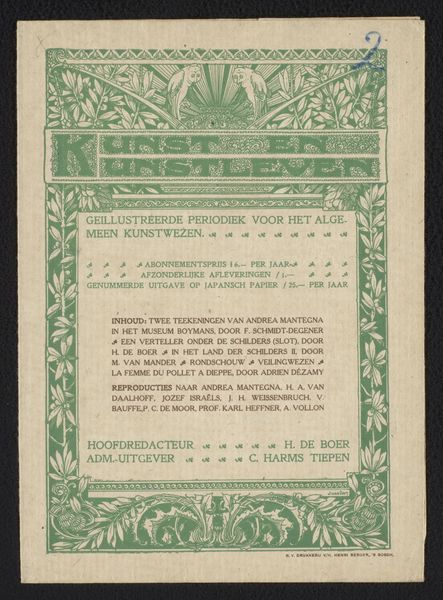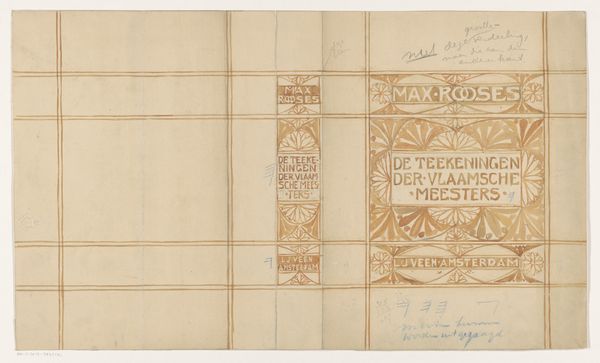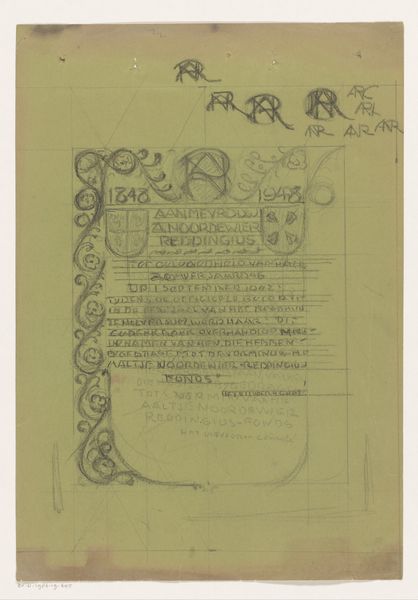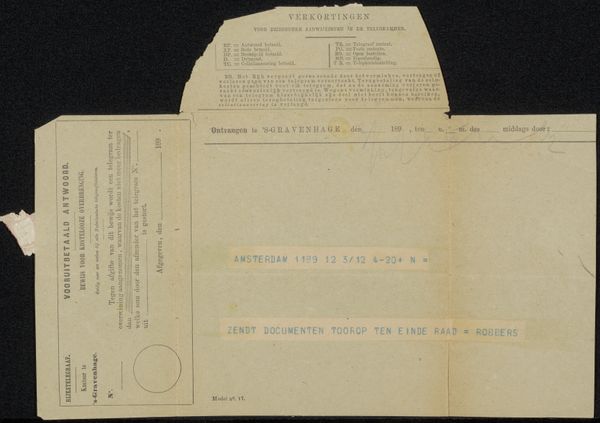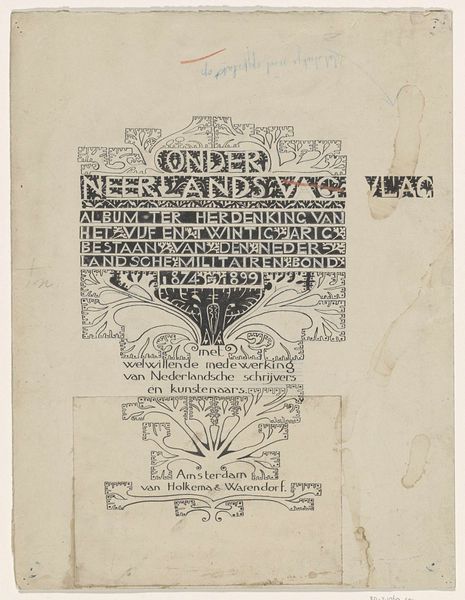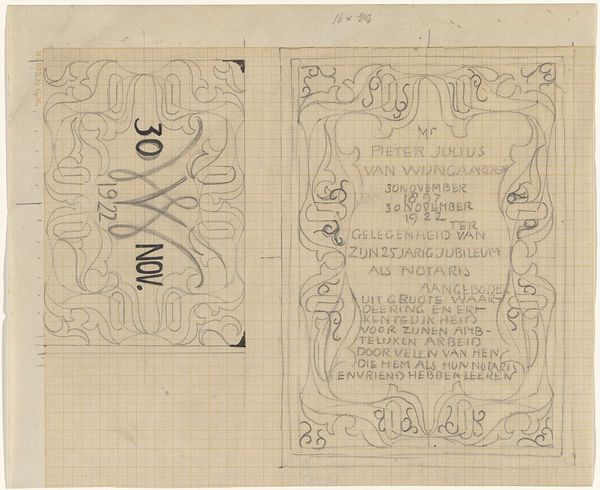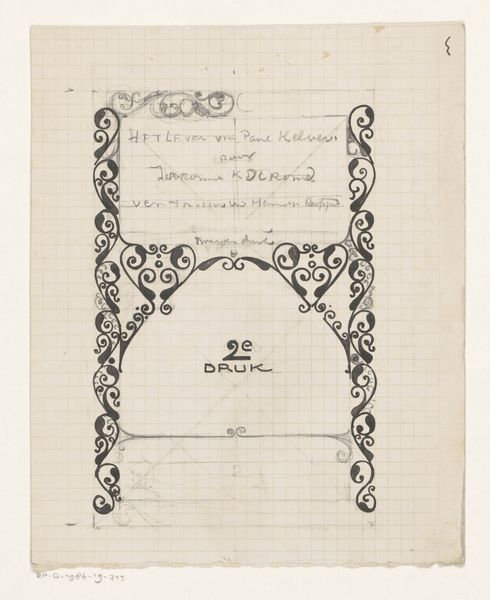
Erediploma van de Academie van Beeldende Kunsten en Technische Wetenschappen te Rotterdam 1917
0:00
0:00
#
aged paper
#
toned paper
#
parchment
#
old engraving style
#
hand drawn type
#
tea stained
#
personal sketchbook
#
golden font
#
watercolor
#
historical font
Dimensions: height 280 mm, width 223 mm
Copyright: Rijks Museum: Open Domain
Curator: We're looking at a fascinating document today: an "Eerediploma" or Honorary Diploma, from the Academy of Visual Arts and Technical Sciences in Rotterdam, dating back to 1917. Editor: It certainly has an aged and stately look to it, hasn't it? The warm, toned paper and gilded lettering suggest a deep history. Curator: The diploma, likely made with watercolor and perhaps some hand-drawn elements, speaks volumes about the relationship between craft, institutional power, and the celebration of individual achievement within an academic setting. It highlights how the institution acknowledged talent through a tangible, crafted artifact. Editor: Yes, the layout strikes me as deliberate in its use of symmetry and hierarchy, almost architectural. The crest at the top, flanked by what appear to be lions, establishes a clear visual authority. The text is carefully spaced and arranged, guiding the eye downwards. It communicates a very clear sense of formality. Curator: The choice of materials -- the aged paper that resembles parchment, and the golden font--also elevates the status of the document and by extension, the recipient. Consider the labor involved in calligraphy versus mechanical printing at the time; each careful stroke imbued additional value. It wasn't just a piece of paper, but a crafted token of esteem. Editor: Absolutely, the golden accents give the central lettering emphasis but the borders around the diploma feature these detailed, repeating patterns that give the overall design an almost ritualistic feel. They certainly reflect a conscious attempt to elevate this document to a piece of visual art, not merely a certificate. Curator: I think what strikes me most is how this seemingly simple document embodies the intersection of artistic training, societal values around labor and expertise, and the role of institutions in shaping creative identities. It provides such a clear record of where visual art degrees once held significance. Editor: I agree. Beyond the individual's achievement, it invites a broader reflection on the evolving aesthetic preferences and cultural values surrounding art education a century ago. Curator: Thank you for sharing your perspectives! It allows us to approach artwork not only as objects of visual appeal but also artifacts loaded with complex history and significance. Editor: A fruitful exchange.
Comments
No comments
Be the first to comment and join the conversation on the ultimate creative platform.
